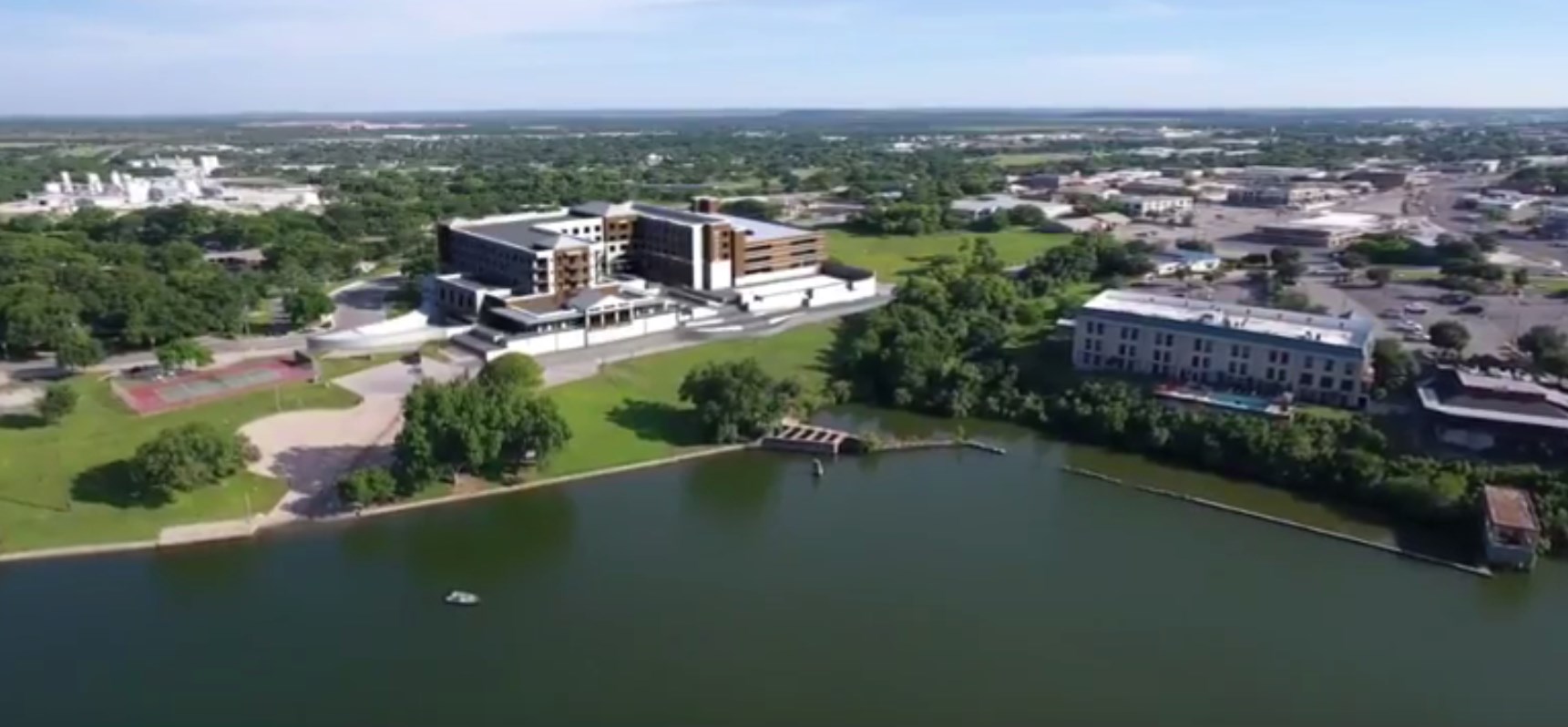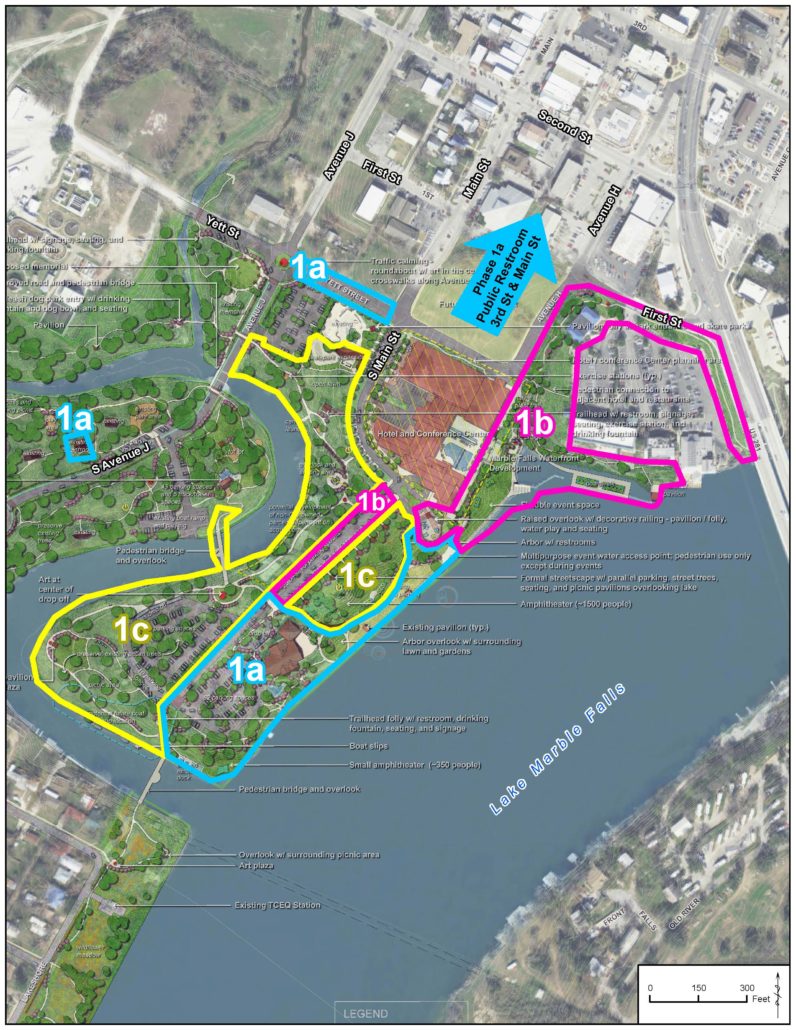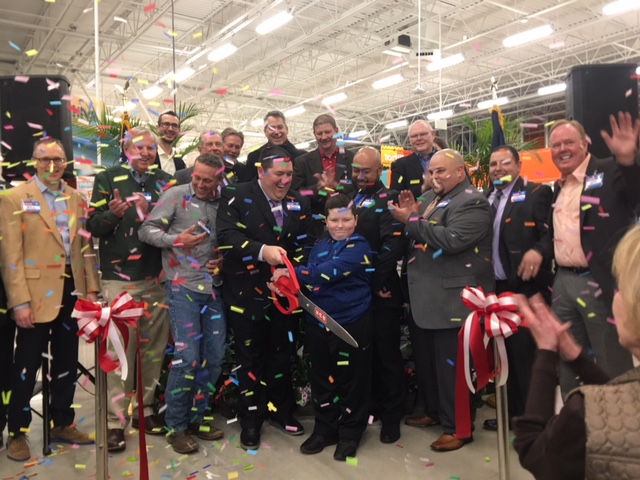The Marble Falls Economic Development Corp. checked out possible concept renderings for Phase 1B of the parks improvements plan during its Wednesday, Jan. 6, meeting.
Memberships and Affiliations
© Copyright Marble Falls EDC
The Marble Falls Economic Development Corp. checked out possible concept renderings for Phase 1B of the parks improvements plan during its Wednesday, Jan. 6, meeting.
Over the last several months, I’ve been reluctant to share my normal updates on economic indicators for Marble Falls. The context for these updates has been turned on its head, and it seems that every statement made by every public official these days is derided by exactly 50% of the population for either politicizing the pandemic or ignoring science, even if it’s not really related to COVID. It’s exhausting and annoying.
Why Downtown?” was a question I was often asked when the EDC started working on the creation of a tax increment reinvestment zone (TIRZ) back in 2012. I think that people underestimated Downtown’s value and wondered why we weren’t focusing our efforts elsewhere. Today, I think people have begun to recognize Downtown’s value—or, if not, at least its potential—but the questions remain about prioritization of projects. To begin my response, I will share the same quotation here that I included in a blog on the TIRZ in 2013:
Last week, I received an email from a friend asking how increases in sales tax are being used and how they can’t be used. It was a great question that deserved a proper response, and I thought I would include it here for others to see as well.
Regarding the facts and figures I post, what I try to convey is the general health of the community’s economy—which doesn’t necessarily translate into additional funds for the City or EDC. The gross sales post you mentioned (Q1 18 gross sales info is now available for Marble Falls: overall, we saw an 8.09% increase over Q1 17 sales, with the strongest growth coming from wholesale trade (+36%), manufacturing (+41%), and construction (+111%)–that’s not a typo!) actually has no bearing whatsoever on either our budget or the City’s budget, since our budgets come from sales tax and not gross sales. In fact, the City has to project about 4.0 – 4.5% annual sales tax growth in order to balance their budget, and they’re about $85,000 short (1.4%) of that mark this year (FY 17-18). The EDC can be more conservative, so we don’t budget any growth—and we’re about 2.09% ahead of schedule for the year. This amounts to a little over $44,000 in new sales tax revenue, which just gets absorbed into our fund balance and helps lessen the shortfall we’ll see over the next couple of years. (By the way, the shortfall is due in large part to the receipt of bond funds in one year and then spending those funds in subsequent years.) So, long story short, what might look like big gains in sales tax doesn’t really translate that way. Big gains in property tax, on the other hand, are what enable the City to increase the street maintenance budget, add emergency personnel, buy fire trucks, etc. Property tax, of course, doesn’t help or hurt the EDC since we derive no funding from it.
I’ll add to my response that the recent gains we’ve seen in property tax have been mitigated to some extent by the City’s conservative approach to setting the tax rate. If the City Council were to maintain the tax rate or even adopt the rollback rate, there would be at least some additional funds for some of the extras that I hear people asking about: more residential sidewalks, increased park maintenance, etc. As it stands today, however, Council and staff are trying to balance the needs and wants of the citizens with keeping those citizens’ tax bills as low as possible—and I applaud them for their efforts.
As always, I’m happy to visit about these or other issues of community interest. Please let me know if you have any questions, comments, concerns, or observations.
In the last day or so, there has been quite a bit of dialogue about the proposed parking garage on EDC-owned property in Downtown Marble Falls. While the focus has been squarely on the garage and concerns about losing our small-town feel, there is much more to the overall project than the garage alone.
With the array of amenities that are planned for the Downtown parks, a parking garage will help us consolidate parking rather than paving any more green space than we absolutely must. The footprint is just over half an acre, versus the multiple acres we would need for surface parking. Controlled access into and out of a structured garage is much safer than hundreds of parking spaces scattered all over the area. Lastly, we believe that a strategically-located garage is preferable to asking people to park all over the place and walk several blocks to their destinations in the Texas heat.

A schematic model of the hotel and conference center shows the size of the garage in relation to the entire project
Along with the garage, a fairly long list of Capital Improvement Plan (CIP) projects will be the subject of some discussion by the City Council in the coming weeks. All of these projects were examined during the budget workshops that took place July 12th and 13th, but formal action will be tied to next year’s budget that begins on October 1st. The CIP project list was broken up into several phases, with Phase 1a being the package proposed for FY 2017-2018. Included in Phase 1a are:

All components of Phase 1 of the Downtown CIP projects are projected to be complete within 5 years
| Description | Opinion of Cost |
| Boat Ramp | $200,000 |
| Yett Street Parking | $235,000 |
| Johnson Park Restroom | $225,000 |
| Main Street Restroom | $125,000 |
| Lakeside Beach and Restroom | $476,100 |
| Lakeside Pavilion Parking | $340,000 |
| Lakeside Park Trails | $120,000 |
| Wayfinding Signage | $200,000 |
| Landscaping, Demo, Utilities, Lighting, Etc. | $855,000 |
| Mobilization and Contingency | $277,610 |
| Total Phase 1a CIP Projects | $3,053,710 |
This package of projects comes directly from the Parks Master Plan that was adopted earlier this year by the City Council. The parks plan was based on extensive feedback from the community, and many of the above projects—trails, shade, restrooms, a beach, and improved access to the lake—ranked at the top of multiple survey questions.
Of course, with such an extensive list of projects requiring a substantial sum of money, the question about how all of this gets funded is a natural one. The answer is that the City will consider issuing bonds to pay for the garage and the Phase 1a projects. The debt service for the garage would come from a combination of hotel occupancy taxes (HOT) and parking fees, while the CIP debt would be serviced using EDC funds, City general funds, HOT funds, and Tax Increment Reinvestment Zone (TIRZ) funds. In all, the annual debt service would be just under $600,000, with the aforementioned revenue streams covering the payments.
This brings me to the next logical question: what about the impact to the tax rate? The great news is that all of these projects can be funded even with a slightly lower property tax rate next year. The staff’s recommendation to the City Council at their meeting on August 1st will be to adopt the effective tax rate of $0.6341, which would be a reduction of $0.0142 (2.2%) from the current rate of $0.6483. The math works because of additions to the tax roll, strong sales tax growth, and the fact that all but one of the revenue streams to be used to cover the debt service are not tied to City property taxes paid by the general public. HOT funds, TIRZ funds, and EDC funds are all special-use funds that have specific purposes and limitations dictated by state statutes.
In speaking for the board and staff of the EDC and other members of the City’s leadership team, we are excited about what’s happening in Marble Falls, and especially in the Downtown area. With the charm and character that come from an array of locally-owned shops and cafes, to upcoming developments including residential projects and a boutique hotel and conference center, to enhanced access to beautiful Lake Marble Falls, we know that we are in the midst of something very special. The first round of Downtown CIP projects is the culmination of many years of community feedback, planning, and vision. The structured parking facility is needed to support a Downtown that will become more active and vibrant in the years to come. And being able to do these things with a reduction to the City property tax rate is a bonus.

Captain Obvious: “Wow—the grand opening of the new H-E-B in Marble Falls is a pretty big deal.”
Admittedly, I knew there would be some buzz surrounding the opening of the new H-E-B, but I was not prepared for more than 2,000 reactions, comments, and shares in the first week of our Facebook video post highlighting last week’s festivities. Everybody knows that H-E-B is a great company with a loyal following, but I thought I would attempt to provide some specific insights on why this is such a big deal.
Before I do, however, I would like to congratulate VALERIE HIBLER for winning the drawing for $100 in H-E-B gift cards, courtesy of the Marble Falls EDC and Squeaky Wheel Marketing.
And, now, my top ten list:
* Kombucha (also tea mushroom, Manchurian mushroom, formal name: Medusomyces gisevii[1]) is a variety of fermented, lightly effervescent sweetened black or green tea drinks commonly intended as functional beverages for their supposed health benefits. (Source: Wikipedia)
By just about every economic measurement, Marble Falls had a banner year in 2017. Sales tax growth was unprecedented. Hotel receipts continued on their very strong trajectory. Building permits issued by the City of Marble Falls kept pace with the growth trend established several years ago. The market value of all properties in the city surpassed a billion dollars for the first time ever. In short, Marble Falls is one of the most economically vibrant small towns in the country.